2025 Subaru Forester First Drive: If It Ain't Broke Make It Better

Photos by Chase Bierenkoven
Quick Take
The 2025 Subaru Forester isn’t a revolution. It hones the edge rather than re-forging the implement, and we think the SUV is all the better for it. Subaru brings in more standard features, including its excellent X-Mode software, to more trims with marginal price increases and better tech. What’s not to like?
“Well, it kinda drives like a Subaru Forester!” chuckles our passenger as we bounce down a dirt road somewhere in rural Montana. On the surface, this sounds a lot like a dismissal of all the work Subaru did updating its popular SUV. A few hours before, we all sat through the same presentation showing the scores of items Subaru touched and refined for its newest SUV. It’s quieter, looks different, and for the first time, will have a hybrid powertrain (coming soon). In reality, it’s the best thing that anyone could’ve hoped for. Why reinvent the wheel? For 2025, Subaru didn’t and it pays dividends.
What’s New for 2025: Almost Everything
For starters, the looks are new, and a drastic departure from the much, much boxier and more angular 2024 Forester (more on this below). All trims now feature roof rails, so ubiquitous is the use of roof racks by Subaru customers. Base models also receive new adaptive LED lights and the latest in Subaru Eyesight driver assist which includes better object recognition, in addition to the usual run of driver aids like lane-keep assist and adaptive cruise control. This is the only trim to use a pair of 7-inch screens. The rest get the 11.6-inch tablet-style screen found in everything from the Crosstrek to the WRX. A litany of other standard features are now thrown in lower in the trim architecture, making the 2025 model a better value.
Sport models see their own set of accents in bronze, a sign that Subaru went to more effort to differentiate models aesthetically. These also get the Startex faux leather surfaces you’d previously only find in Wilderness models (the 2025 Wilderness will be along “soon”). Dual-Mode X-Mode, also carried over from the Wilderness model, is brought down into more trims, and everything from the Sport model up benefits from the all-wheel drive software. Limited trims get new features too, like a hands-free liftgate and a full leather interior. The top-tier Touring model sees a new 360-degree camera and heated/ventilated leather seats with suede accents and heated rear seats. As for powertrains, only one is available: the same 180-horsepower 2.5-liter boxer four from last year.
Exterior Style: Making it better
The Forester’s most noticeable change is the move toward a sleeker, more modern face that lacks the angles of the previous model. This is thanks in large part to slimmer new LED headlights that sit flush with the bumper. They frame a redesigned grille that changes some depending on the trim. Subaru says the field-of-stars logo is new too, but you’ll have to be right on top of the SUV to notice the difference. The arches are new as well, and some trims feature ventilation on the plastic cladding around the wheel well. Around the side, Subaru tells us a big priority was keeping the SUV’s acres of glass, and its rear quarter windows are more pronounced than last year’s model, which helps with visibility. In back slimmer rear lights linked by a styling line and embossed “F O R E S T E R” badging can be found on every trim.
As a whole, the Forester looks significantly more current than the outgoing model. Its design is also much less gawky and awkward than the old model, which to our eyes always looked a little over-styled. The feeling of space brought on by the large windows is also fantastic, and the SUV’s belt lines feel a lot lower than many competitors. It’s a solid new design and a big change from models past.
Powertrain and Economy: Don't Mess with Success
The powertrain, however, isn’t. Subaru has found a formula, and it sticks to it. The eventual Forester hybrid will shake things up, but this big, naturally aspirated Boxer four-cylinder is all we’ve got for now. It’s not a bad thing, with 180 horsepower and 178 pound-feet of torque, but we do wish that torque figure started with a “2.” Subaru says the torque curve is wider, and the SUV does feel a little more eager, but there is no replacement for more power, as it turns out.
The whole thing is still hooked to a continuously variable automatic transmission- Premium, Sport, Limited, and Touring trims get paddles that feel about as useful as an extra toe. It’s best to just leave the thing be and let it work. Subaru’s programming of the transmissions is smart enough to figure out what you want without getting in the way. More useful is the brand’s standard all-wheel drive system, which is still as wonderful as ever. For 2025, the Forester also sees a new steering rack, which is derived from the WRX.
The EPA estimates the latest Forester will do 29 mpg combined, and given its standard all-wheel drive and tall, boxy shape, we find this pretty impressive. Still, those looking for a seriously thrifty Forester should wait until the hybrid model comes along later this year.
Handling and Drivability: Some Things Never Change
In many ways, the new Forester handles like so many other Subaru models, thanks in large part to the automaker’s use of all-wheel drive. Under nearly every condition, the Forester feels planted and confident, and most will never even notice the all-wheel drive system pushing torque around to the places it’s needed most. Our driving consisted almost entirely of rutted, poorly maintained dirt trails in the Montana wilderness, and the Forester, even with its all-season tires, never took issue with its task. However, It’s worth noting that loose surfaces will cause the Forester to push out wide and understeer like there’s a battleship on the nose, even with the traction control off. Subaru’s X-Mode software for the all-wheel drive system can help a little with this, and its various settings to make a genuine difference on the terrain they claim to be built for. Two modes are used in the software: Snow/Dirt and Deep Snow/Mud.
The Forester also has great visibility. Subaru spent a good chunk of its pre-test drive presentation telling media about the low beltlines and the use of glass to create a sense of openness. It sounds a lot like a marketing pitch, but the Forester really does feel airy inside, and visibility down and out of the car is better than a lot of new SUVs.
Ride Quality and Comfort: A Night and Day Difference
Subaru is quite proud of the fact that its latest enhancements to the Forester’s unibody mean it uses more structural adhesive than the Lexus GX. While starting a build quality war with Lexus is a lot like invading Russia in the winter, the Subaru does feel markedly stiffer and solidly built. We were told that the amount of adhesive used is more than tripled from 26.2 feet to 88.5 feet. There are also feet of new welds used to strengthen the chassis as well, and the end result is a Forester that is quieter, comfier, and more composed both on and off-road. Cabin noise, even at high speeds, rarely ever becomes an issue.
Off-road, the Forester benefits from 10% greater torsional rigidity. It’s a nice figure on paper, but what it means in practice is that the SUV spends less time shuddering from impacts, creating a smoother experience for passengers. Subaru tells us they also redesigned the Forester’s seats for the same reason, and they feature increased bolstering at the back and thighs to hold occupants down better than before.
Subaru’s EyeSight driver assists have been honed further for 2025, and they largely work well, with an exception. The brand’s autosteer is still far from smooth, and on many of Montana’s big, sweeping highway bends the wheel will inch around in your hands, making tiny corrections to hold its course, whereas systems from other automakers don’t move nearly as much. On some straights, the wheel will also hover around as if the system is struggling to pick where it wants to be in the lane. Luckily, the adaptive cruise control works just fine with the steering assist turned off.
Interior Style and Quality: Hey, this Looks Familiar
The seats are comfy too, and even on hours-long drives across varying terrain, they hold up well. Most trims offer lumbar adjustment, and Subaru has brought power seat controls to the passenger side in more of the lineup for added convenience. Some trims feature ventilated seats, which is a welcome addition on long drives.
The rest of the interior feels on point, and some small touches give the Forester some personality, like the bronze accenting on Sport models or the suede inserts on Limited trims. These small factors aside, the interior feels like any other Subaru. The wheel is likely right out of the Outback and Crosstrek, and the switchgear is all found elsewhere in the automaker’s portfolio. This isn’t to say the Forester feels cheap, mind you- merely familiar.
The infotainment unit will be familiar to those who have been in a new Subaru as well. It has some highs, like newly standard wireless phone projection, and useful widget bars for things like X-Mode, weather, and climate controls. But it also has some lows, like touch-only climate controls (save for temperature adjustment) and low resolution. Displays from the competition are much more crisp.
Value, Dollars, and Sense: All of the Above
Given the raft of new standard equipment and design changes, it wasn’t surprising to see the Forester’s price rise for the 2025 model year. We think that despite the changes, the money still makes sense. The Forester is a solid value proposition that will carry almost everything through almost any weather. Even in Touring trims, it’s priced below the average transaction price for new car sales in the US. Pricing for the lineup, including delivery, is as follows:
- Base: $31,090
- Premium: $33,390
- Sport: $35,890
- Limited: $37,390
- Touring: $41,380
2025 Subaru Forester: Final Thoughts
Nothing about the Forester formula needed to change for 2025. Subaru had to make a large, practical SUV at a competitive price point for the millionth year in a row, and it did that. Moreover, Subaru did that without allowing the car to grow too much. The existing Forester lineup is strong, and the benefits of owning a Subaru still center around all-weather, all-terrain capability. With Hybrid and Wilderness models not too far off, it’s hard not to see the latest iteration of the Forester as a success.
Become an AutoGuide insider. Get the latest from the automotive world first by subscribing to our newsletter here.
Pros | Cons |
|---|---|
Great visibility | Low torque can make overtaking a burden |
All-wheel drive is standard | Tablet-style infotainment relies too heavily on touch controls |
Subaru off-road usability | Autosteer function is more than a little unsure of itself |
Sleek looks |
2025 Subaru Forester FAQs
- Q: How much horsepower does the 2025 Subaru Forester have?
- A: Until the hybrid is released, all Foresters have a 2.5-liter four-cylinder engine making 180 horsepower and 178 pound-feet of torque
- Q: Does the 2025 Subaru Forester come with AWD?
- A: All-wheel drive is standard across the Forester lineup
- Q: How much does a 2025 Subaru Forester cost?
- A: 2025 Forester pricing ranges from $31,090 for the base model to for the top-tier Touring trim $41,380
Specifications | |
|---|---|
Engine: | 2.5-liter four-cylinder |
Output: | 180 hp, 178 lb-ft |
Drivetrain: | AWD |
Transmission: | CVT |
Fuel Economy USA (MPG): | 29 combined |
Starting Price USA: | $31,090 (incl. dest.) |
Top Trim Price USA: | $41,380 (incl dest) |

Chase is an automotive journalist with years of experience in the industry. He writes for outlets like Edmunds and AutoGuide, among many others. When not writing, Chase is in front of the camera over at The Overrun, his YouTube channel run alongside his friend and co-host Jobe Teehan. If he's not writing reviews of the latest in cars or producing industry coverage, Chase is at home in the driver's seat of his own (usually German) sports cars.
More by Chase Bierenkoven
























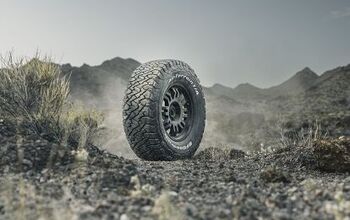

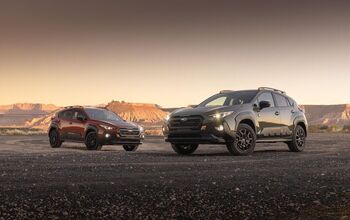
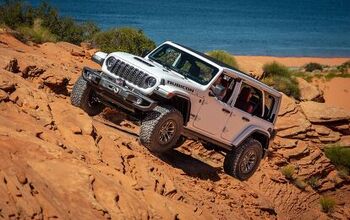
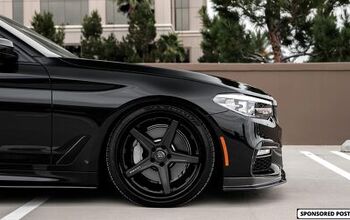

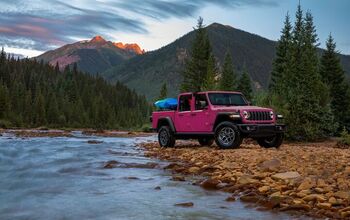

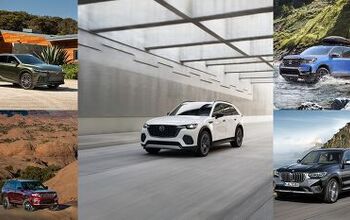


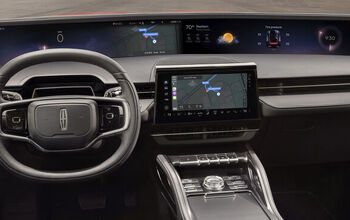

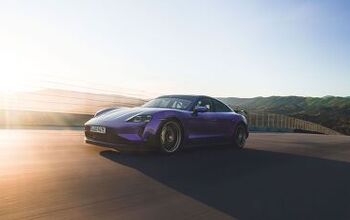
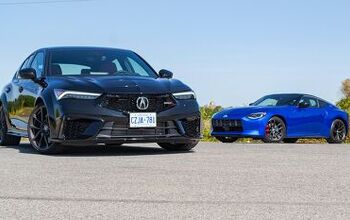
Comments
Join the conversation
4 Runner is far more capable for offroad use. Plus, it's made by Toyota.